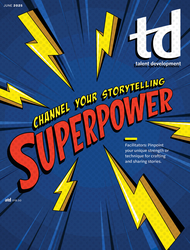TD Magazine Article
Finding Inclusive Balance
A review of The Inclusion Equation by Serena H. Huang.
Sun Jun 01 2025
The Inclusion Equation
By Serena H. Huang
Wiley, 256 pp., $35
Serena Huang adopts a distinct approach to employee well-being concepts by explaining how to leverage data analytics and artificial intelligence and merge them with new talent strategies. Through interviews with leaders across the domains of diversity, equity, and inclusion; workplace well-being; and people analytics, Huang relays invaluable insights into strategies and mindsets that drive success in the workplace.
The book delves into the details of implementing AI in training and explores the impact of the technology on employee well-being. It also discusses how companies have gained valuable knowledge about employee collaboration and communication through advanced analytics, including AI-powered techniques. One tactic, Huang explains, is to ensure a company has its affairs in order before piloting AI programs. For instance, if an organization wants to use chatbots to answer employee questions, it should provide the tool with up-to-date policies to avoid giving staff incorrect information.
To evaluate program fundamentals to determine how to quantify an initiative's return on investment, Huang provides a three-step approach. First, choose the specific metric the program intends to improve. Second, quantify the impact of the change in that metric after implementation. Third, calculate the net ROI by subtracting the program's cost from the financial impact of the change in the metric.
Take the basic example Huang presents of a training program that costs $100,000, where the company observed a 10 percent decrease in turnover. The average cost of replacing an employee is $50,000, and the company loses 20 workers per year, resulting in an annual turnover cost of $1 million. The 10 percent reduction translates to a $100,000 yearly savings, indicating that the training program breaks even for the company, with higher potential savings over multiple years.
Huang notes that her interview subjects share a common mindset: Successful organizational leadership requires a willingness to think bigger, challenge the status quo, and take a data-driven approach. When talent development leaders adopt that line of thinking, their risks will help create an inclusive and supportive environment for all employees.

